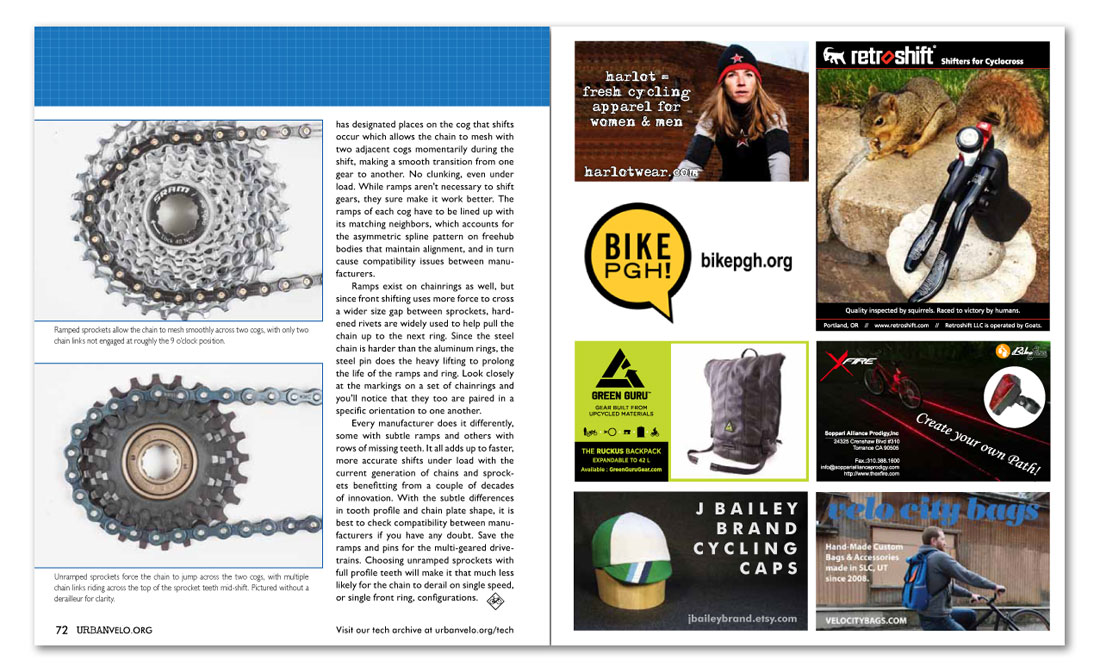


has designated places on the cog that shifts occur which allows the chain to mesh with two adjacent cogs momentarily during the shift, making a smooth transition from one gear to another. No clunking, even under load. While ramps aren’t necessary to shift gears, they sure make it work better. The ramps of each cog have to be lined up with its matching neighbors, which accounts for the asymmetric spline pattern on freehub bodies that maintain alignment, and in turn cause compatibility issues between manufacturers.
Ramps exist on chainrings as well, but since front shifting uses more force to cross a wider size gap between sprockets, hardened rivets are widely used to help pull the chain up to the next ring. Since the steel chain is harder than the aluminum rings, the steel pin does the heavy lifting to prolong the life of the ramps and ring. Look closely at the markings on a set of chainrings and you’ll notice that they too are paired in a specific orientation to one another.
Every manufacturer does it differently, some with subtle ramps and others with rows of missing teeth. It all adds up to faster, more accurate shifts under load with the current generation of chains and sprockets benefitting from a couple of decades of innovation. With the subtle differences in tooth profile and chain plate shape, it is best to check compatibility between manufacturers if you have any doubt. Save the ramps and pins for the multi-geared drivetrains. Choosing unramped sprockets with full profile teeth will make it that much less likely for the chain to derail on single speed, or single front ring, configurations.
Harlot
Green Guru
Retroshift
BikePGH
J Bailey Brand
X Fire
Velo City Bags